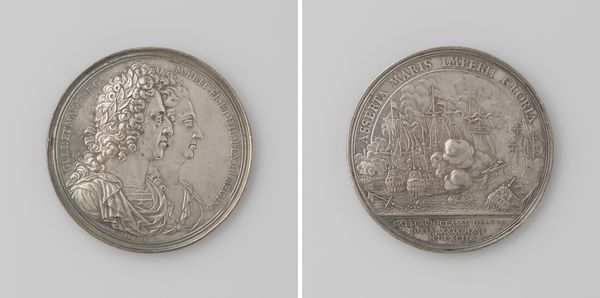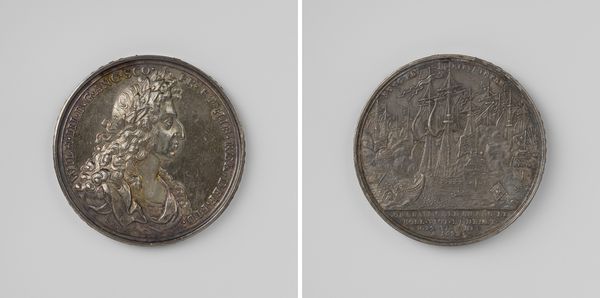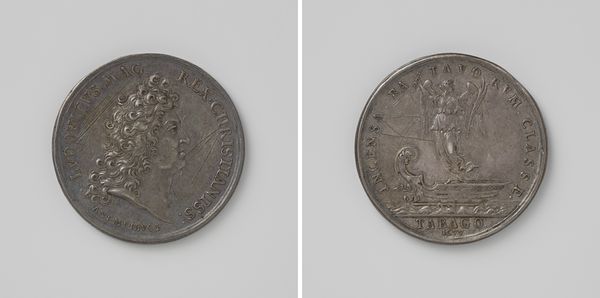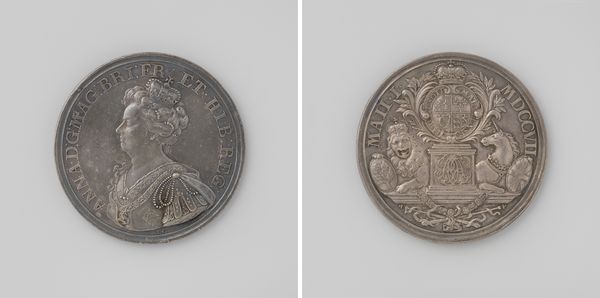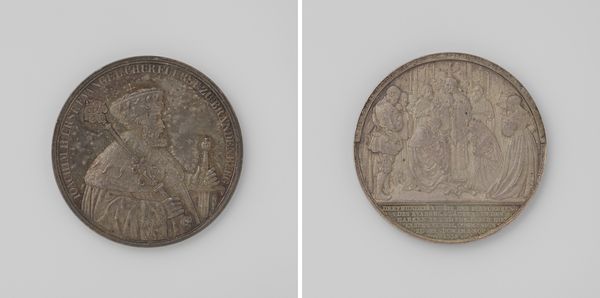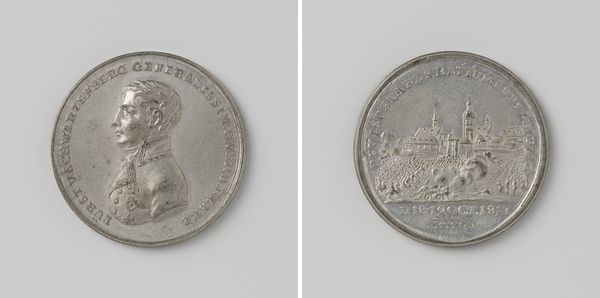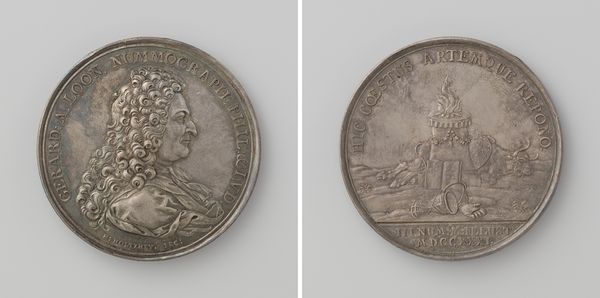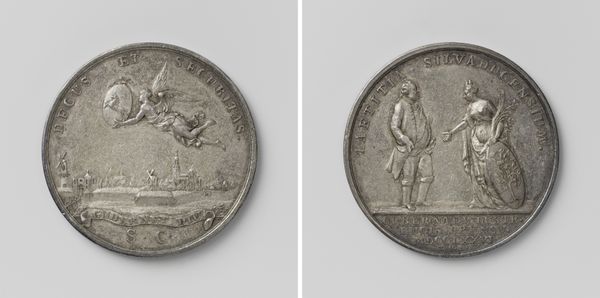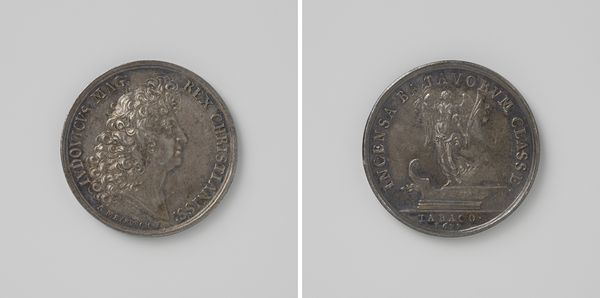
Tweehonderdste verjaardag van het ontzet van Vlissingen, penning geslagen op last van de stad Vlissingen 1772
0:00
0:00
metal, relief, engraving
#
neoclacissism
#
decorative element
#
allegory
#
metal
#
relief
#
old engraving style
#
sculptural image
#
history-painting
#
engraving
#
miniature
Dimensions: diameter 2.8 cm, weight 6.23 gr
Copyright: Rijks Museum: Open Domain
Curator: This intriguing metalwork before us commemorates the two-hundredth anniversary of the relief of Vlissingen. The piece, commissioned by the city itself, dates back to 1772 and was crafted by Theodorus Victor van Berckel. Editor: My initial impression is that the medal, with its subdued tones, evokes a strong sense of neoclassical idealism, while hinting at deeper socio-political narratives through contrasting imagery. Curator: Precisely. It exemplifies the trend toward neoclassicism which, from the 1760s, took hold within the Republic’s urban elites. It also serves as propaganda, subtly reminding the public of the municipal authority's role in preserving stability. Consider the inscriptions framing each face of the medal. Editor: Indeed. The figure of Victory is prominent here, bearing the attributes of triumph and resilience that speaks volumes to Dutch national identity and collective memory. Look how one side has allegorical figures and Latin phrases: "Sponte et Feliciter." Can you unpack that further? Curator: Gladly. This side represents voluntary action and prosperity, personified by allegorical figures referencing both governance and the act of defence, their inclusion speaking to civic virtue and rewarded effort. On the other side we see Eben-Haëzer, which translates from Hebrew as "stone of help," marking the divine support in their victory. The medal subtly suggests that victory in governance lies in a combination of human agency and divine assistance. Editor: Interesting, especially regarding that tension and interplay of visual and textual elements to construct a powerful, persuasive statement. This almost reminds us of the enduring human desire to create meaningful symbols, to impose a sense of order and narrative on historical events. It's fascinating how van Berckel utilizes classical motifs to express decidedly contemporary concerns. Curator: Indeed. He understood how symbols transcend time, enabling a dialogue between past achievements and present realities. That's precisely what such institutions aim for, to perpetuate these concepts into a unified national consciousness. Editor: Well, examining it with these contexts has given me new appreciation for the nuanced layers. A lovely little package, this! Curator: Agreed. Delving into this medal helps us appreciate how historical narratives are meticulously built, reshaped, and reinforced, which offers valuable lessons in thinking critically about present-day representations of power.
Comments
No comments
Be the first to comment and join the conversation on the ultimate creative platform.

